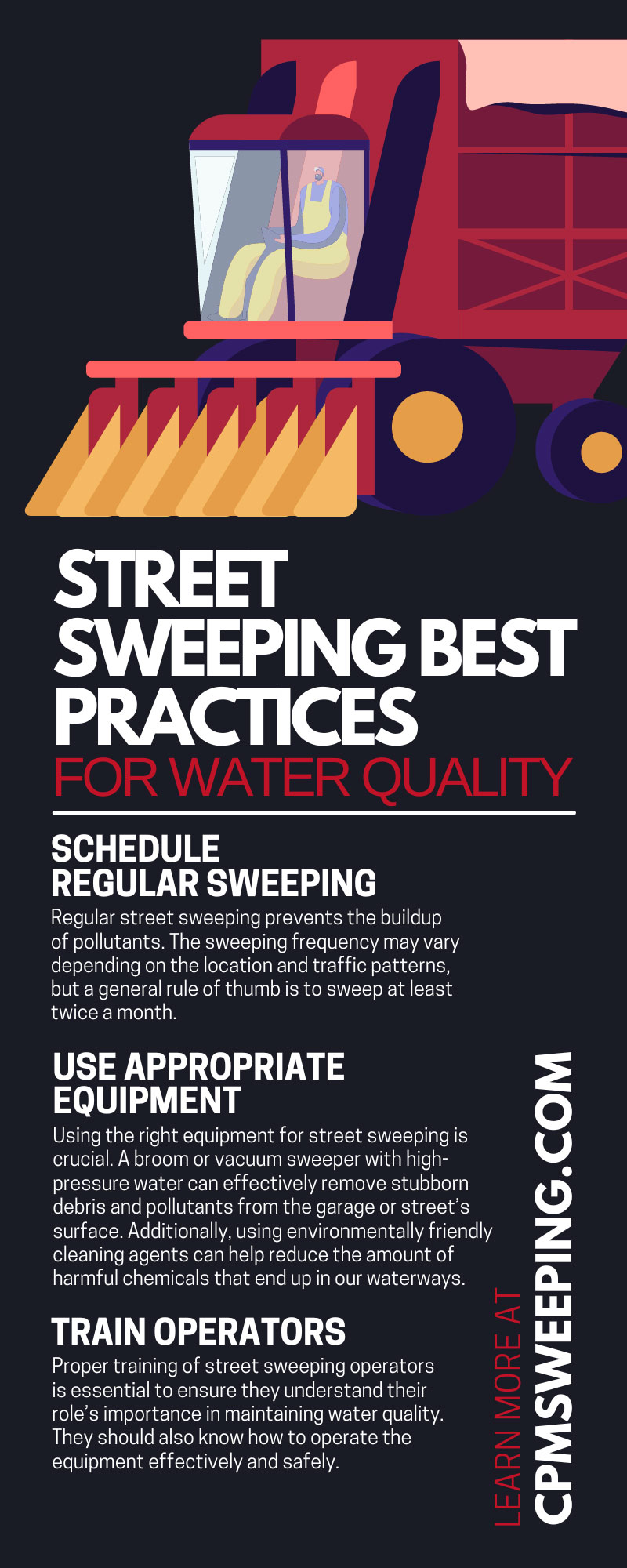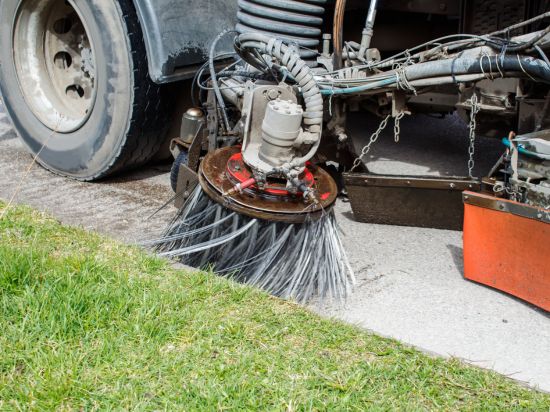Street sweeping may not be the first thing that comes to mind when considering water quality, but it plays a crucial role in keeping our waterways clean. As rainwater flows over streets and parking lots, it picks up pollutants such as oil, grease, litter, and sediment. These pollutants can end up in our rivers, lakes, and oceans if left unchecked, harming aquatic life and contaminating our drinking water sources.
Street-sweeping best practices are essential to prevent this from happening. We share the importance of street sweeping for water quality in this article, and provide some tips on ensuring effective and environmentally friendly street sweeping services.
The Importance of Street Sweeping
Street sweeping is a critical part of stormwater management. It helps remove pollutants from the surface of streets and parking lots before they can reach our waterways. Street sweeping also helps prevent storm drains from clogging, which can lead to flooding in heavy rain events.
Additionally, regular street sweeping can improve air quality by reducing the amount of dust and debris that can become airborne and cause respiratory issues. Clean streets also contribute to a more attractive and welcoming community, positively impacting property values.
Challenges in Implementing Street Sweeping Programs
Implementing a street sweeping program may seem straightforward, but it often comes with unique challenges. Scheduling is one such challenge. Street sweeping must happen during off-peak hours to minimize disruption to traffic and local businesses which can lead to increased staffing costs.
Public cooperation is another significant challenge. Residents and business owners must understand the importance of keeping their cars and trash bins off the streets during sweeping hours. Gaining collaboration can be a major hurdle, requiring extensive outreach and educational efforts.
Equipment choices also present challenges. Not all street sweepers are created equal, and choosing the wrong equipment can lead to inefficient operation and increased pollutant runoff.
Finally, there’s the issue of waste disposal. Street sweepers collect large amounts of debris, which could end up in our waterways if not for our proper disposal processes.
Despite these challenges, the benefits of street sweeping to our water quality and overall community health make it worth the effort.
Tips for Effective Street Sweeping
Here are some best practices to follow to ensure that street sweeping is effective in maintaining water quality.
Schedule Regular Sweeping
Regular street sweeping prevents the buildup of pollutants. The sweeping frequency may vary depending on the location and traffic patterns, but a general rule of thumb is to sweep at least twice a month.
Use Appropriate Equipment
Using the right equipment for street sweeping is crucial. A broom or vacuum sweeper with high-pressure water can effectively remove stubborn debris and pollutants from the garage or street’s surface. Additionally, using environmentally friendly cleaning agents can help reduce the amount of harmful chemicals that end up in our waterways.
Pay Attention to Hotspots
Certain areas, such as industrial sites or busy intersections, may require more frequent sweeping due to their higher potential for pollution buildup. The workers you hire should closely monitor and sweep these “hotspots” accordingly.
Consider Time of Day
Sweeping during off-peak hours can minimize traffic disruptions and allow for more thorough cleaning, as fewer people will park their vehicles on the street.
Train Operators
Proper training of street sweeping operators is essential to ensure they understand their role’s importance in maintaining water quality. They should also know how to operate the equipment effectively and safely.
Addressing Misconceptions About Street Sweeping
Several misconceptions surround street sweeping that can hinder its effectiveness. Let’s tackle four of the prevalent ones:
Misconception #1
Street sweeping is only for aesthetic purposes. While clean streets undoubtedly enhance a community’s visual appeal, the primary function of street sweeping goes beyond aesthetics. As we’ve outlined, street sweeping is critical in maintaining water and air quality by removing harmful pollutants before they enter our waterways or become airborne.
Misconception #2
Rain will wash away the pollutants. Some believe that rain will naturally wash away pollutants, rendering street sweeping unnecessary. However, rain can often exacerbate pollution problems by washing contaminants into storm drains, directly affecting our water bodies. Street sweeping prevents this by removing pollutants before the rain can wash them away.
Misconception #3
All street sweepers are the same. A street sweeping program’s effectiveness largely depends on the type of equipment used. Not all street sweepers are equally effective at removing pollutants. Choosing the right type of sweeper for the job and the specific environmental conditions is crucial.
Misconception #4
Street sweeping is too expensive. Like most services, street sweeping has some associated costs. However, the benefits of street sweeping far outweigh those costs. The environmental and health benefits of maintaining clean streets and waterways are significant and often overlooked when considering the cost. Furthermore, regular street sweeping can prevent more expensive problems, such as clogged storm drains and damage to aquatic ecosystems.
At CPM, we dedicate ourselves to breaking down misconceptions about street sweeping and highlighting its essential role in maintaining water quality. Our team of experts has the knowledge and equipment to provide effective street-sweeping services.
Environmental Considerations
While street sweeping is crucial for preserving water quality, it’s also essential to consider its environmental impact. Here are some ways to minimize street sweeping’s ecological footprint:
- Use alternative fuels: Electric or biodiesel-powered sweepers can significantly reduce emissions compared to traditional diesel-fueled sweepers.
- Proper disposal of waste: Street sweeping generates significant waste, including debris and pollutants collected from the surface. Disposing of this waste properly is crucial, following all local regulations.
- Prevent runoff: Having effective containment measures in place is essential to avoid washing pollutants into storm drains during street sweeping. These containment methods include using barriers or booms and avoiding sweeping during heavy rain events.
Street sweeping is important for maintaining water quality and promoting a clean and healthy environment. We can ensure that street sweeping remains effective and sustainable in the long run by following best practices and considering the environmental impact. At CPM, we understand these challenges and have the expertise to implement a street-sweeping program that is both effective and environmentally friendly. We prioritize customer satisfaction and commit to providing professional, high-quality services. Our commercial parking garage sweeper will ensure your business stays clean while following parking garage best practices. Contact us today to learn how we can help keep your streets clean and your waterways safe. Let’s work together to build a better, healthier future for all!


